There’s plenty of dimensions to think about when it comes to proper tree care. On the one hand, there’s proper fertilization to ensure your trees get enough nutrients. Homeowners also have to consider pruning their trees to keep them fit and healthy.
Why Should I Prune My Trees?
Some homeowners balk at pruning their trees. To many people, trees can survive just fine on their own, like they do in the wild. However, corrective pruning is a necessary step to keep your trees safe and healthy. Left on their own, trees can grow unhealthily and develop problems that can be corrected with proper pruning.
After planting a tree, will it stay within the same place as it grows? Will the branches develop into a proper form that can support their weight. These are some questions to consider. Think of pruning as another responsibility you have as a good tree owner. Your tree is an investment, and it needs the right care to flourish and give you what’s expected of it.
Benefits of Pruning
Giving your tree a trim helps its appearance and keeps it looking clean and neat. However, pruning also comes with other benefits that can help your trees stay healthy.
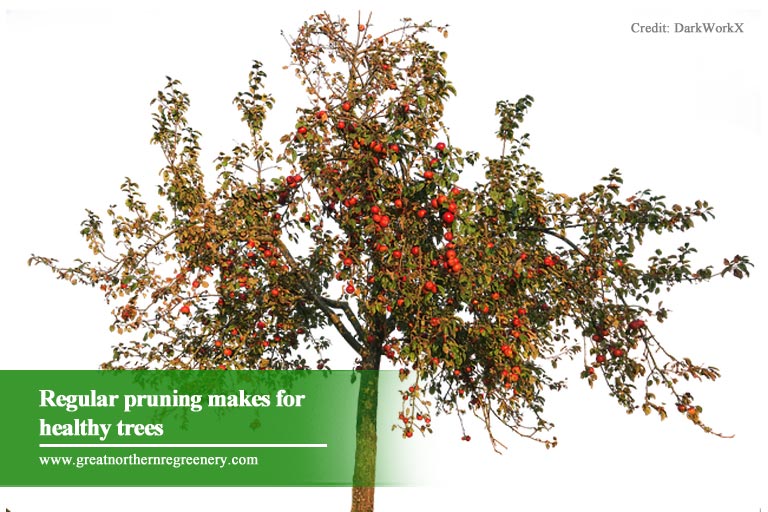
1. Improves health
One thing your trees get out of pruning is the removal of dead or dying branches. Those dead branches can become entry points for pests and diseases that could threaten the tree’s health. Pruning at the right time can help preserve your tree’s health and save you the trouble of getting a new. Pruning also gives the tree more exposure, giving it access to more sunlight it needs for further growth. Be proactive to help your trees stay healthy and avoid complications from uncontrolled growth.
2. Enhances growth
Pruning can help stimulate growth in plants, especially if you do it at the right time of the year. There’s an explanation for why pruning encourages growth. Pruning away part of the main stem encourages other areas to grow more vigorously. Use pruning to help your tree get more of the growth it needs, especially in the spring. Alternatively, you can use pruning to curb overgrown areas on the tree. This suppresses growth in those areas and makes the tree more pleasing to the eye.
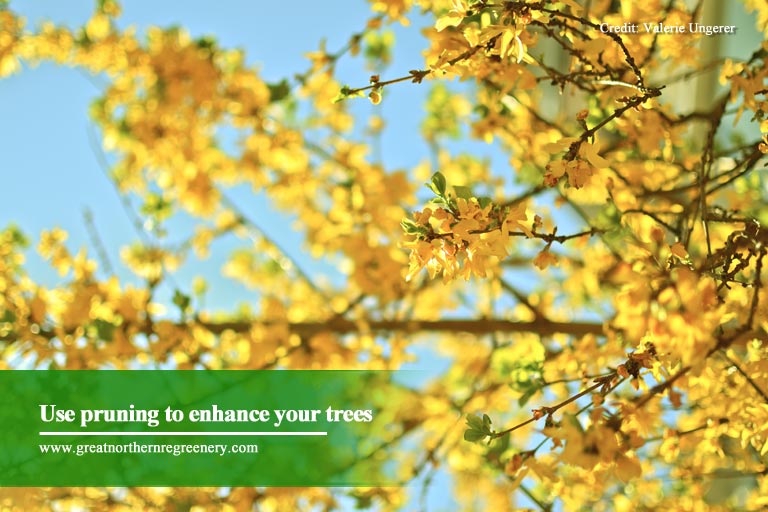
3. Boosts the tree’s beauty
There’s nothing like a tree blooming in spring. Achieving the right timing with your pruning can boost the aesthetics of your tree and make your space more sightly. For example, winter pruning can encourage the tree to sprout more flowers in spring. When done correctly, that practice can give you more beautiful flowers to enhance the beauty of your landscape. Trimming the tree also removes overgrown branches that might spoil the tree’s look. Professional tree trimming can make the tree look more orderly without affecting its health.
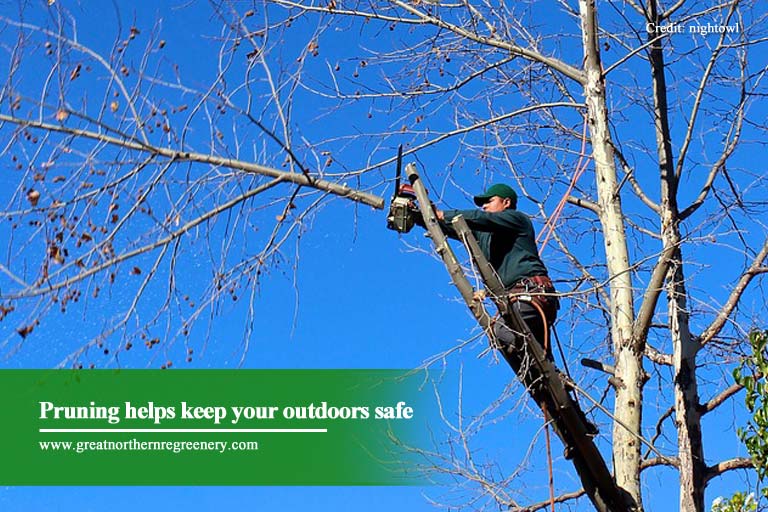
4. Makes the surroundings safer
A tree’s branches can become too heavy for the tree to bear safely. In case of storms, the wind and rain can knock those branches loose, causing them to fall. Regular pruning removes hazardous branches before they become a danger to your home. As a tree grows, its limbs can also get too close to power lines and become a fire hazard. Trimming keeps them short enough to avoid coming too close to anything nearby.
5. Reduces pests
Professional pruning also has the benefit of making pest control much more manageable. Many pests (especially insects) make their homes in the branches and trunk of the tree, where they can eat the leaves or suck the sap. Trimming the limbs can be a form of pest and insect control. Fewer leaves and branches mean less coverage, discouraging them from settling around the tree. Many of these pests can also contribute to disease. Removing the pests can help keep your tree healthy and free of infections. Finally, some pests (e.g. rats and mice) can climb your tree and use the branches to enter the house. Trim any branches hanging over your roof to deny pests an easy entry inside.
Types of Pruning
When it comes to pruning, there are different types for different needs. Which branches an arborist may remove will depend on what the tree needs. Here are some of the common types to help you decide which one best suits those needs and keeps the tree healthy.
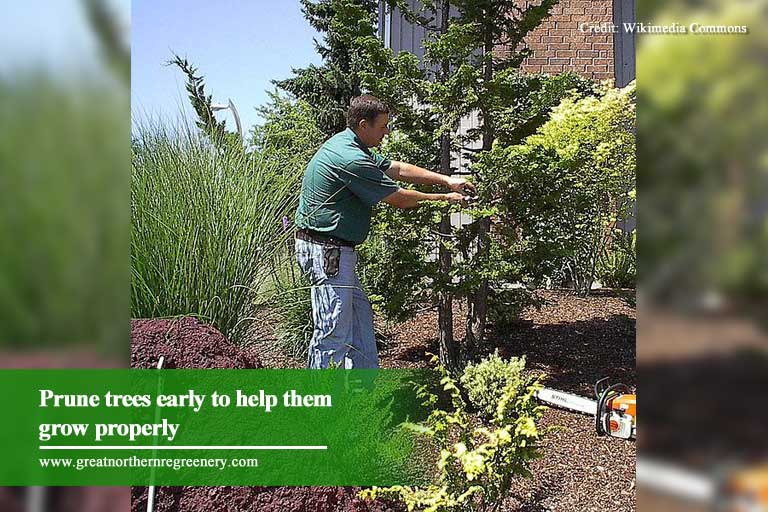
1. Deadwooding
As the name implies, deadwooding removes deadwood from your tree (e.g. dead, dying, and diseased branches) to make the whole more stable and healthy. The branches removed in this type of pruning are weakly-attached and unhealthy branches that the tree can do better without. Perform regular deadwooding of your tree to keep it healthy. After pruning, your tree will look much neater, and it’ll be much safer without its weaker branches.
2. Thinning
In thinning, some of the tree’s branches are removed along the crown to open the canopy. Thinning out the canopy helps open up the tree’s foliage, allowing air and sunlight to pass more easily and reducing the chance of breakage in case of storms. It’s also an excellent way to take weight off of larger limbs and make the tree more stable. Ideally, use thinning on younger trees that can take the loss more easily than older plants.
3. Raising
Sometimes, lower branches can become an obstruction, especially if the tree is next to a walkway or driveway. Raising removes the lower-hanging branches to provide clearance for your vehicles and pedestrians. Removing those low branches also makes it easier for sunlight to hit grass and plants just below the tree. Remember to remove lower limbs when your tree is still relatively young. Removing limbs early prevents them from becoming too large and putting strain on the tree.
4. Reduction
If trees are allowed to grow too large, they can interfere with nearby utility lines. To avoid that, use reduction to lessen the mass and take some height off the tree. Some limbs are selectively removed to preserve the rest of the branch and avoid extensive damage. Done properly, reduction allows the tree to grow in a healthy pattern and minimizes the chance of decay at the cut. This method is usually done with younger trees whose branches haven’t become too large yet.
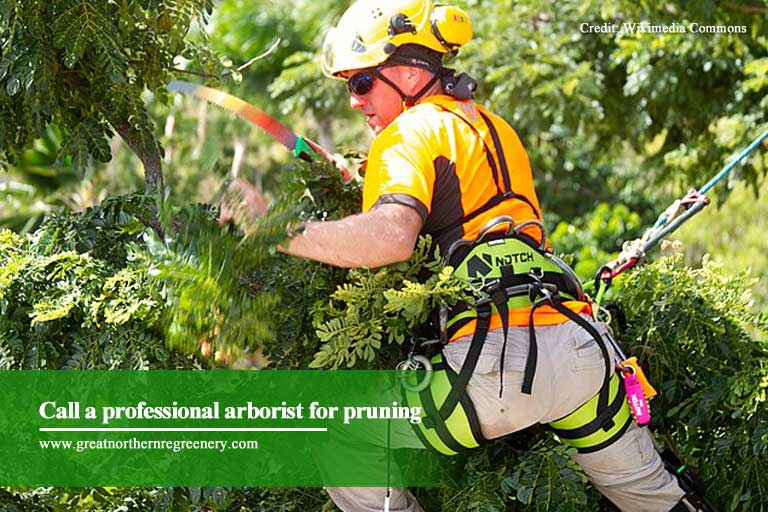
Pruning is a necessary responsibility for homeowners. Knowing how pruning works is just as vital as knowing how to plant your trees properly. Taking care of your tree is like taking care of a pet: you need to take the time to give it what it needs to stay healthy and thrive. Use these insights to help you use pruning to care for your trees properly. Proper pruning is vital for relieving stress on your trees and making your landscape both attractive and safe.
Great Northern Regreenery is the tree service to call when you need high-quality work and excellent service. We offer full services for your tree-related needs, including tree fertilization corrective pruning, and disease control. When we go to work on your trees, safety is our number one priority. Give us a call at (905) 775-7444 or visit our contact page for a free inspection and assessment of your trees.





